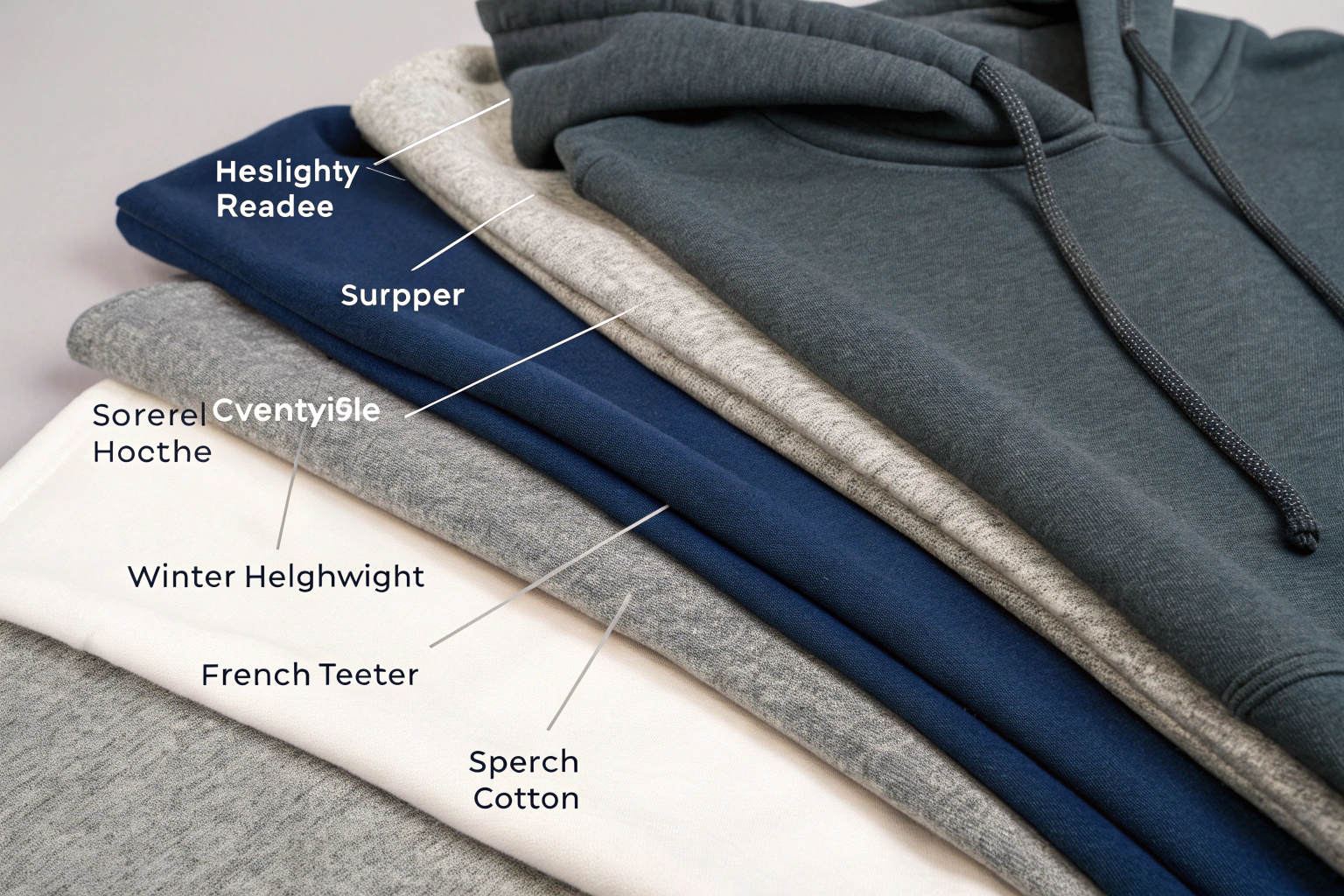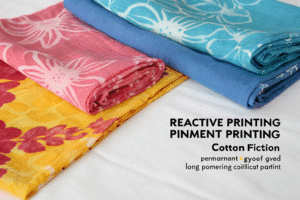Hoodies and sweatshirts are no longer just gym gear or lazy-day outfits—they have become global fashion staples worn by teenagers, professionals, and even luxury buyers. The secret to a hoodie that customers love and wear repeatedly lies in its fabric choice. A well-made hoodie feels soft against the skin, drapes well, holds its color, and stands up to dozens of washes without losing shape. A poor fabric choice, on the other hand, results in pilling, shrinking, or garments that feel cheap and uncomfortable.
In short: The best fabrics for hoodies and sweatshirts are cotton fleece, French terry, and cotton-polyester blends. Each option brings unique strengths—cotton fleece for warmth, French terry for breathability, and blends for durability—while specialty fabrics like organic cotton, recycled polyester, or wool cater to niche premium markets.
From my years of experience in textile production and exports, I’ve seen how American buyers prefer heavyweight cotton fleece for winter collections, while European brands often choose French terry for transitional seasons. Let’s look closely at the leading fabrics, complete with GSM ranges, examples, and real-world applications.
Cotton Fleece
Cotton fleece is perhaps the most iconic hoodie fabric. It is knit on the outside for durability, while the inside is brushed to raise soft fibers, creating that familiar plush layer everyone associates with comfort.

Why cotton fleece works for hoodies
- Weight & Warmth: Ranges from 280 to 400 GSM. A 350 GSM cotton fleece hoodie feels dense and heavy, ideal for cold winters in New York or Berlin. It traps heat efficiently, making it a go-to for premium streetwear.
- Comfort Factor: The brushed interior provides softness that only improves with wear, a reason why consumers describe their favorite fleece hoodies as “like a blanket you can wear.”
- Real Example: Champion’s Reverse Weave hoodies use heavyweight cotton fleece at around 400 GSM. They resist shrinking and maintain their boxy fit for years, which explains their cult following.
Pros
- Very warm and insulating
- Breathable despite thickness
- Premium hand feel valued by consumers
Cons
- Can shrink if fabric is not pre-shrunk
- Takes longer to dry compared to polyester
- Higher fabric cost, limiting budget applications
French Terry
French terry offers a more versatile option than fleece. Instead of brushing the loops, manufacturers leave them intact, creating a fabric that absorbs moisture without becoming heavy.
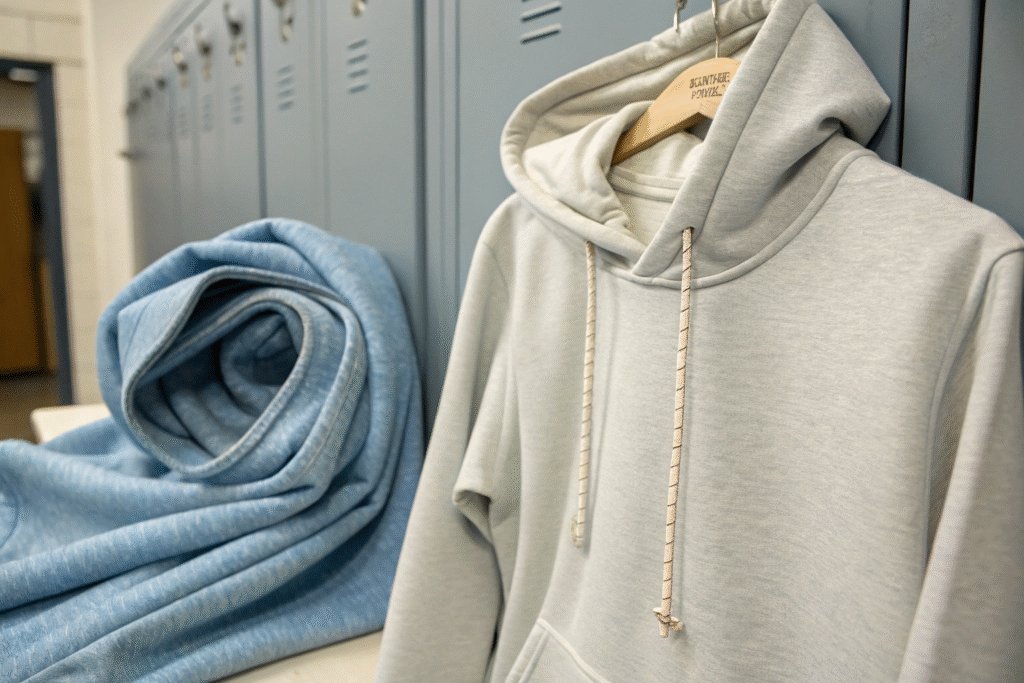
Why French terry is popular
- Weight & Feel: Typically 200–300 GSM. A 250 GSM French terry hoodie feels lighter on the shoulders and drapes better than fleece, making it perfect for spring and fall.
- Moisture Performance: The looped back surface wicks sweat effectively. That’s why French terry is popular in athleisure and yoga hoodies, where breathability is as important as comfort.
- Real Example: Lululemon and Nike incorporate French terry into active hoodies, balancing stretch, softness, and breathability. Customers love that these hoodies work equally well for a gym session or casual city wear.
Pros
- Breathable, moisture-absorbing, and less bulky
- Comfortable for moderate climates
- Drapes smoothly without stiffness
Cons
- Lacks the insulation of fleece
- Can feel too light for cold winters
Cotton-Polyester Blends
Cotton-polyester blends dominate the mass hoodie market because they merge the natural softness of cotton with the durability and practicality of polyester.
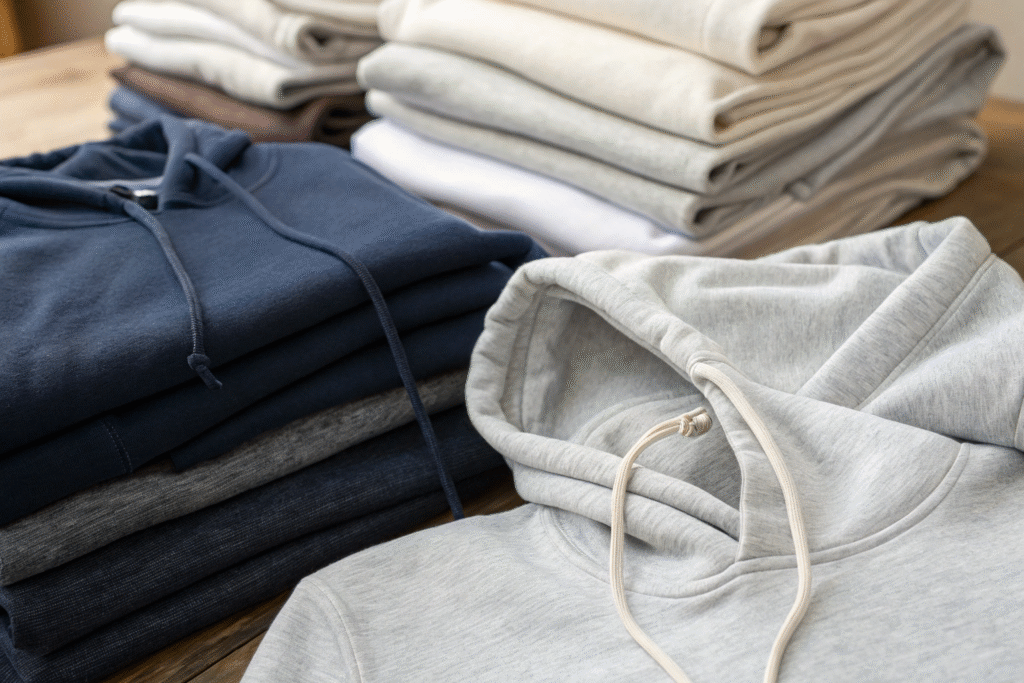
Why blends dominate mass markets
- Durability & Care: Polyester fibers add resilience, reducing shrinkage and wrinkles. Hoodies made from 80/20 cotton-poly blends often survive 40+ washes without significant color fading.
- Cost Efficiency: Blends are more affordable than pure cotton, making them attractive for bulk production.
- Weight Range: Usually 260–340 GSM, which is versatile enough for year-round hoodies.
- Real Example: Gildan and Hanes rely heavily on cotton-poly blends for their global hoodie lines, where consistent performance and low price are top priorities.
Pros
- Lower cost with reliable durability
- Quick drying compared to cotton fleece
- Colors stay vibrant longer after washing
Cons
- Less breathable than 100% cotton
- Polyester component may pill with wear
Specialty Fabrics
In addition to the mainstream fabrics, brands targeting sustainability or luxury markets often choose specialty fabrics.
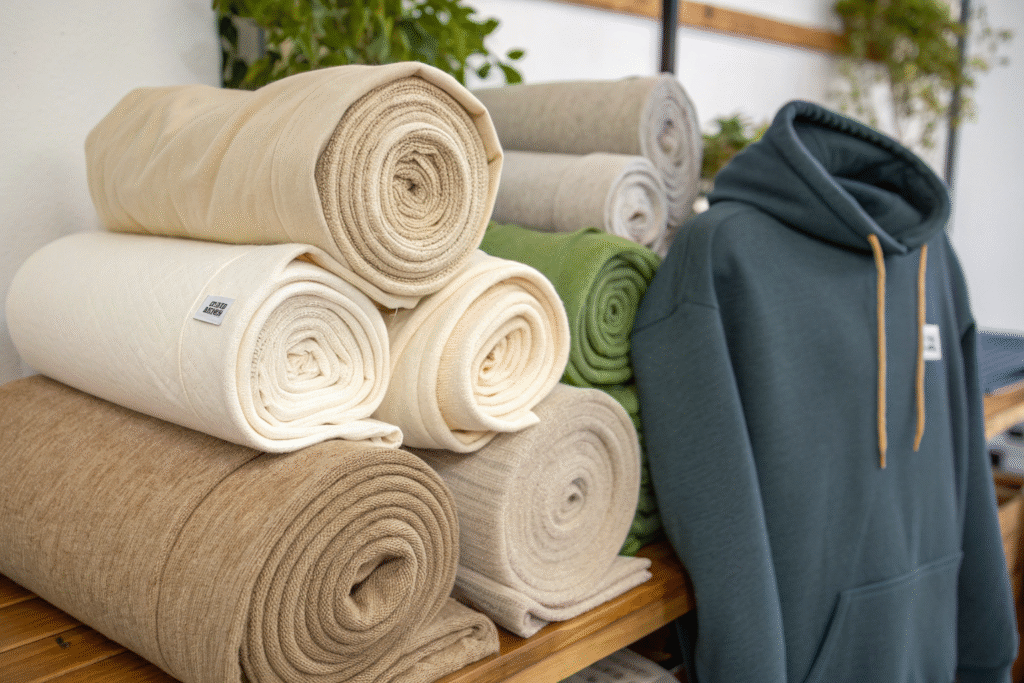
Examples of specialty choices
- Organic Cotton: Uses fewer chemicals and less water. A 280 GSM organic cotton fleece hoodie appeals to eco-conscious consumers shopping on platforms like Everlane or Patagonia.
- Recycled Polyester Fleece: Made from PET bottles, this option reduces waste and supports circular fashion. North Face often highlights its use of rPET in outdoor hoodies.
- Performance Blends (Poly + Spandex): These hoodies stretch and recover well, making them perfect for running or training gear.
- Wool Blends: A 350 GSM wool-cotton hoodie offers premium warmth and natural odor resistance, often seen in high-end brands like Acne Studios.
These fabrics give buyers storytelling power—sustainability certifications or luxury materials justify higher price tags in competitive markets.
Conclusion
Choosing the right fabric for hoodies and sweatshirts is about balancing warmth, breathability, durability, and cost:
- Cotton fleece is best for customers who want warmth and a premium cozy feel, especially in cold climates.
- French terry offers breathable comfort, ideal for activewear and transitional weather.
- Cotton-polyester blends provide durability and affordability for large-scale production.
- Organic cotton, recycled polyester, and wool blends add sustainability or luxury value for niche markets.
At Shanghai Fumao, we supply hoodie fabrics across all these categories, with GSM ranges from 200–450. Our integrated production—from knitting and dyeing to coating and inspection—ensures consistent quality, even at scale. Whether your brand needs eco-friendly organic fleece for Europe or durable cotton-poly blends for the U.S. bulk market, we deliver fabrics that meet both performance and price demands.
If you are preparing your next hoodie or sweatshirt collection, contact our Business Director Elaine at elaine@fumaoclothing.com. Together, we can develop hoodie fabrics that give your brand both comfort and market edge.

